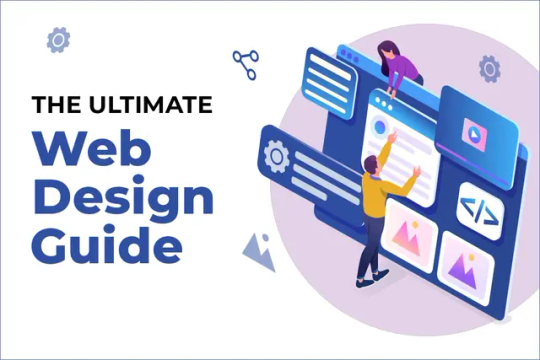#Framer development solution
Explore tagged Tumblr posts
Text

Top 10 Framer Components to Instantly Elevate Your Website User Experience
Enhance your site’s user experience using these top 10 Framer components. Elevate design quality, boost engagement levels, and deliver smooth, interactive features effortlessly.
#custom web app development company#custom website development service#Framer development solution#Framer development company#Framer development services#IT consulting company#Top Framer Components#Website User Experience#Framer Components#10 Framer Components
0 notes
Text
WhatMatters
Your guide to California policy and politics

By Lynn La
July 1, 2025
Presented by Dairy Cares, Climate-Smart Agricultural Partnership, California Housing Consortium and TURN- The Utility Reform Network

Good morning, California.
Huge changes to CA’s landmark environmental law, CEQA

A framer working on a construction project as seen through a puddle's reflection in Castro Valley on Feb. 6, 2024. Photo by Camille Cohen for CalMatters
Last week Gov. Gavin Newsom signed a state budget deal with the caveat that the Legislature would also advance trailer bills intended to speed up housing development in California. The governor signed those measures Monday (more on that later), signaling a major change in the state’s 54-year-old environmental law.
The California Environmental Quality Act, or CEQA, requires government agencies to review and disclose the environmental impact of any public project, including new housing developments. The new changes to the landmark law would affect the state in two key ways:
Urban housing: For years pro-development advocates and the building industry argued that neighborhood groups and environmentalists wielded CEQA to delay or halt new development. Now, a large portion of urban “infill” housing developments — housing built in and around existing development — will no longer be subject to the law. That means developers won’t have to research or mitigate the ways new construction could impact local traffic, pollution, noise levels and other environmental factors. Though some housing experts say removing delays that would have previously existed under CEQA is significant, it’s too soon to guarantee that development in California will accelerate. Other factors, such as rising labor costs, tariffs and permitting processes can also slow down construction. Read more from CalMatters’ Ben Christopher.
High-tech facilities: Critics of the CEQA changes are also slamming exemptions for high-tech manufacturing sites, which they say would make it easier for companies to build industrial projects in low-income communities already struggling with pollution. Democratic Sen. María Elena Durazo of Los Angeles, for example, cited the extensive cleanup efforts of lead-contaminated soil stemming from a battery recycling facility in Vernon. But Sen. Scott Wiener, a proponent of the CEQA changes, said the exemptions would help attract more companies, such as computer chip makers. Said the San Francisco Democrat: “These are jobs of the future … and I want them to be in California.” Read more from CalMatters’ Alejandro Lazo and Rachel Becker.
CalMatters events: Join us on July 30 in San Francisco for a two-part conversation on how artificial intelligence and emerging technologies are transforming work. We’ll explore the legal and ethical challenges, and the need for policy solutions to safeguard workers’ rights. Register today to join in person or online.
Other Stories You Should Know
CA budget deal wraps up

Lawmakers gather on the Assembly floor before the start of session at the state Capitol in Sacramento on June 30, 2025. Photo by Miguel Gutierrez Jr., CalMatters
From CalMatters Capitol reporter Alexei Koseff:
Newsom, ‘Yes In My Backyard’ lawmakers and the carpenters union took a victory lap Monday evening as Newsom signed a pair of bills that will streamline environmental reviews for many housing and infrastructure projects in California. The governor demanded that the state’s entire $321 billion budget — which he signed on Friday — could not take effect without the proposals.
They received his approval just hours before the start of the new fiscal year on July 1, at a signing conference where Newsom touted the changes as necessary to get California building again or risk losing the trust of the public: “We needed to go bold and big on this Holy Grail reform,” he said.
More budget news: As part of labor deal negotiations with some public employee unions this year, Newsom’s office is pausing state spending toward health care benefits these workers receive in retirement, reports CalMatters’ Adam Ashton.
With the price tag of $85 billion, retirement health care benefits serve as one of the state’s largest long-term debts. By pausing pre-funding payments for two years for current workers, the state would save more than $700 million in the new budget year, according to Newsom’s office.
Since workers in these unions also won’t have to contribute toward their retirement health care for that time period, the move would also boost their take home pay by as much as 4.5%.
Read more here.
Protecting and paying young athletes 🏈

A La Costa Canyon Mighty Mavericks player during a Pop Warner football game against the Valley Center Mighty Jaguars in Carlsbad on Sept. 15, 2012. Photo by Mike Blake, Reuters
Some changes could be on the way for California sports:
Youth football helmets: A year after Newsom vetoed a bill that would have banned kids younger than 12 from playing tackle football, the Legislature is considering a bill to prohibit youth tackle football leagues from banning “soft-shelled add-ons on football helmets” that are intended to prevent concussions. According to the bill’s author, Assemblymember Avelino Valencia, an Anaheim Democrat and former college football player, the proposal tries “to make the game as safe as possible, while also providing the opportunity for parents and young people to play this game if they so choose.” Read more from CalMatters’ Ryan Sabalow.
Paying college athletes: As part of a class-action lawsuit that takes effect today, California’s top universities can begin paying their athletes directly. Previously, student athletes were paid by third parties, such as a company, for their “name, image and likeness.” But in an unprecedented shift that further blurs the line between amateur and professional players, a school would be able to pay a total of $20.5 million this year to any or all of its athletes. Some student athletes at UC Berkeley, for example, could make more than $200,000 a year. Read more from CalMatters’ Adam Echelman.
And lastly: Start Farm probe; transit commuters pushed out

Firefighters work to put out a burning home as the Palisades Fire spreads through Pacific Palisades in Los Angeles on Jan. 7, 2025. Photo by Caylo Seals, SIPA USA via AP Images
California regulators have launched an investigation into State Farm’s handling of wildfire claims from the L.A. County fires. CalMatters’ Levi Sumagaysay and video strategy director Robert Meeks have a video about the probe, which stems from survivors’ reports of delays and poor service as part of our partnership with PBS SoCal. Watch it here.
And check out another video from CalMatters’ Ben Christopher and Robert about the displacement of public transit riders in gentrifying neighborhoods. Watch it here.
SoCalMatters airs at 5:58 p.m. weekdays on PBS SoCal.
California Voices
CalMatters columnist Dan Walters: Newsom is taking a page out of former Gov. Jerry Brown’s playbook when it comes to building a national image, but Newsom should make sure his political stunts don’t become too blatant.
Other things worth your time:
Some stories may require a subscription to read.
Plan to sell off public land in the West nixed from ‘big, beautiful bill’ amid GOP backlash // Los Angeles Times
ICE is arresting migrants in worksite raids. Employers are largely escaping charges // The Washington Post
CA’s strategy to advance equity for descendants of slavery // KQED
The whole country is starting to look like CA // The Atlantic
Newsom makes good on $100M promise for downtown Fresno // Fresnoland
A year of inspections at Men’s Central Jail reveals ‘horrific’ conditions // Los Angeles Daily News
Military requesting to pull 200 troops back from CA protest duty // AP News
Trump administration sues LA over sanctuary policy // Los Angeles Times
LA fire property owners who chose to clear debris themselves must have it completed — or face consequences // LAist
See you next time!
Tips, insight or feedback? Email [email protected]. Subscribe to CalMatters newsletters here. Follow CalMatters on Facebook and Twitter.
About Us· How We're Funded· Subscribe· Donate
CalMatters 1017 L Street #261 Sacramento, CA 95814 United States
2 notes
·
View notes
Text
youtube
Complete Web Design Course for Beginners | Free Full Course
Welcome to the Complete Web Design Course for Beginners! In this free full course, you'll learn every step of the professional web design process and build a comprehensive project alongside me. We'll start with strategy and structure, move into the design phase, and even develop the website without writing a single line of code using Framer…
Throughout this course, you'll thoroughly understand web design techniques such as wireframing and color theory, and you'll become proficient with tools like Figma and Framer. This isn't just theory—it's practical application. By the time you finish, you'll be ready to design and publish simple websites for paying clients.
What You'll Learn:
Strategy: Client needs, identify competitors, and develop solutions
Structure: Create sitemaps, content documents, and wireframes.
Design: Research, moodboards, generate assets, and design in Figma.
Development: Build responsive websites with animations in Framer.
This course is perfect for beginners who want to dive into web design and develop their skills step-by-step. Whether you're looking to start a new career or just want to design your own website, this course has everything you need.
#youtube#free education#web development#education#web design resources#web designers#web developers#web design#Complete Web Design Course for Beginners#educate yourself#educate yourselves#web design tips#figma#ux wireframe#wireframing
4 notes
·
View notes
Text
O2A2 Daily Log. DAY/NiGHT 2 (July 6th, 2024)
I'll be posting these until I get to the game's development conclusion!
Day II.
This was the day I could swiftly work on the sprites. I already had a small sketch laying around so I decided to polish it. I realised how fast I work when there’s a deadline to be met (for me it was until the night strikes), and the sprite was easily done.
As with the previous O2A2 entry I made, it was broken down to smaller parts for me to later animate in Moho. Since 1 year had passed since then, I learned to also break down the eye into smaller parts – brows, eyelid line, upper eyelash, side eyelash, bottom eyelash, bottom eyelid…

The whole armature thing took 20 minutes, after that came the question that I dreaded the most. Framerate and frames. See, as it was just a simple entry I did not want to make a big animation, since that’d not only take up more space than, say, one detailed CG would, but also would lag out the entire game (foreshadowing).

The animation runs at 18 fps for 36 frames (2 seconds). I already witnessed the horrors of typing the image names into the program ONCE (in the last entry), so I made a python script in a separate file to print out the lines with pauses in them for me. Neat!
As for animations themselves, all but the main animation are loops/snippets of the main one, which to me was the best solution to it all. They look organic enough, and after seeing the actual full animation they all blend in nicely.
Night I.
I started tweaking the tic-tac-toe mechanism again. Now she’ll be smarter at playing Os (not by much, but still). I made her notice when the player is trying to make a three-in-a-row, otherwise she moves at random if she doesn’t see anything!
The animations I quickly coded in were now placed in the game. The aforementioned lag made me shrink down the sprites a bit, and it runs more smoothly now. I also increased the cache limit, seeing how the main animation, in accumulated megabytes, weighs around 720. RIP !!!! I’ll see what I can do with that tomorrow.
I’m really loving how it’s all coming together. I still have a whole draft of end speeches waiting for me. Help!
5 notes
·
View notes
Text
Do scopes of work actually work?

In terms of background, consultant and author Michael Farmer and I have three things in common: the first is both of us received our undergraduate degrees in literature, although his is from Princeton (prestigious) and mine from George Washington University (not prestigious).
From there our professional paths diverge. He gets at MBA from Harvard, ultimately and to this day runs his own consulting practice, plus writes a book. I get a Masters in literature from the University of North Carolina at Chapel Hill, wander in a wasteland of jobs for ten years, then accidentally and serendipitously arrive at my true calling, as an advertising agency Account Management/client service person.
The second thing we have in common is I, like Farmer, write a book.
The third thing we have in common: both of us want to fix what’s wrong with advertising.
Farmer writes regularly on substack under the moniker “C-Suite Blues.” He recently posted, “Transforming the Effectiveness of Madison Avenue’s Scope of Work Management -- to Drive Improved Performance; Ten Problems and Ten Corrective Steps.”
I suppose you could take exception to some of the ten articulated but unsubstantiated problems, but even so I’m inclined to give him the benefit of the doubt, except for problem number four, where he claims, “Media and creative SOWs are developed unilaterally by advertisers and given to their agencies for execution.”
Unilaterally? By advertisers??
Perhaps things have changed in the time since I worked for an advertising agency, but in my experience, clients never wrote scopes of work for us. The agencies where I worked always wrote them for our clients, based on a briefing they provided us, which would vary in both content and delivery, depending on the knowledge and sophistication of each client.
In our scopes we typically would recap the assignment, then detail the deliverables, timing, and cost associated with addressing the clients’ brief. We would share the results then discuss any needed adjustments, but once we agreed on an approach, the scope – whether it was in the form of a letter of proposal, or a presentation, or a detailed budget and timeline – would govern the work to be done.
The point: clients did not dictate a scope of work; instead, they articulated a problem, issue, or opportunity, which we then converted into a solution to address the need.
Taken as a whole, Farmer uses the ten solutions to lay out in a series of imperatives – “do this, do that, do the other thing” – that speak to “the what” of the problem. After the tenth solution there’s nothing to guide readers on how to do the things he proposes.
Stepping back from what Framer has written, I realize what he’s talking about: call it what you will, this is about “Scope Creep,” meaning how client assignments have grown and fees have not grown with them.
The Art of Client Service also has a chapter on scopes of work, called “Perfect the Perfect Scope of Work.” It begins with a definition of scope creep, explains why it happens and to whom, then recommends eight steps readers can take to avoid the very thing Farmer complicates.
The recommendations are straightforward and simple: do a scope-of-work, make sure it’s accurate and complete, make sure to financially account for the unexpected, make sure to review it regularly, and, when necessary, revise it. It explains “the how” in a clear, concise, and put-it-into practice way.
In reading what Farmer has written, it felt as if I were sitting in a conference room, with him taking me through a series of PowerPoint slides, with no intent to actually execute what he’s talking about. His goal instead: another gig, another PowerPoint presentation, another opportunity lost to solve the problem.
Farmer has never worked in an advertising agency; he might be able to identify a problem, but solve it? He has no idea. His “solutions,” such as they are, are textbook, remote, and more theoretical than real.
Do scopes of work work? If you get tangled up in Framer’s overly complex, consultant-driven, I-want-you-to-retain-me-again analysis, they usually don’t.
If you follow what I’ve written, however, they usually do.
3 notes
·
View notes
Text
Capturing the ambience of Virtua Fighter 3
This popular fighter was revised a few times before being expanded and released as VF 3 Team Battle on both Arcade and Dreamcast. We'll use the Supermodel emulator to run the former version, as it offers superior visuals and sound.


Disabling music
What ultimately worked was a secret button combination: hold Start just before the stage loads, during 2-player matches. The required timing is somewhat tricky; it helps to stagger two presses across your controllers.
Alternatively you can visit stages with Dreamcast's practice mode, where music is always disabled. But as mentioned earlier, I found that Arcade offers higher-quality audio.
VF3 official soundtrack
The official soundtrack also uses a few seconds of ambience to introduce each stage track. In fact, it features some stage sounds not audible in-game (only in Sound Test) such as drips on Cave and creaks on Raft.
Hiding the HUD: Supermodel
For a robust solution, we can modify Supermodel's rendering code. Inside CRender2D::PreRenderFrame, introduce logic such that we don't draw layer 0 inside the Above3D rendering section.
Also, while you're inside the code, ensure layer 3 is skipped inside CNew3D::SkipLayer. This avoids drawing this strange red triangle:

Hiding player-characters
I discovered that Supermodel meshes are grouped into higher-level entities called nodes. Also, it turns out that Virtua Fighter 3 stages always use the same nodes to model fighters. Therefore we can tell Supermodel to skip rendering nodes at chosen indicies to skip drawing characters.
Most stages only use nodes 2 and 3, but there are a few exceptions:
Great Wall: 1P is nodes 2-3, inclusive. 2P is 4-5
City: 1p is 3 - 15. 2P is 17-29
Stream: 1P is 2-5. 2P is 6-9
Cave: 1P is 11 - 23, 2P is 24 - 38

Running the game
We can reduce some friction by entering Free Play mode, where credits aren't required.

Visiting levels
Hold start while selecting a stage to load its alternate visuals/music. VF3 stages also have a third variant for Dural encounters.
Camera angles
We can cycle through camera modes (standard, first-person, overhead) by pressing Start in single-player modes. While you can't move the camera directly, it zooms to frame our fighters as they move, so we can space them out to get our desired angle.
Widescreen and framerate
Model 3 machines output at 57.524hz, which you can enable using the -true-hz launch option. Otherwise, Supermodel will default to 60fps, with a correspondingly small speedup in game speed.
Widescreen for Model 3 games is a multi-faceted topic. Supermodel automatically adjusts the rendering aspect ratio so that 3D elements appear correct. I've found this render-layer approach can lead to unwanted culling on other emulators, but I didn't notice any problems here.
What's less straightforward is rendering 2D game elements, such as backgrounds. You can leave Supermodel to draw these tiles at their original aspect ratio, or tell it to stretch them using the -wide-bg option. Since these elements are supposed to scroll with gameplay, and designed appear at a certain scale/position, these two options offer the best fidelity to what the developers intended.


Custom background scaling
We can apply our own custom scaling using some post-production. First, change Supermodel's glClearColor to a chroma key-friendly hue (e.g. magenta) and edit CRender2D::PreRenderFrame or prevent calls to CRender2D::RenderFrameTop. This combination will give us background-free footage, onto which we can then apply the relevant texture with our the scaling of choice in post.
I obtained VF3's background textures by dumping them from the Dreamcast version.
Here's a proof of concept - note the magenta fringes around the palm trees due to imperfect filtering:

Bonus: Debug mode
Hold Punch + Kick + Guard + Escape, and then press Start, to begin the game in debug mode. In debug mode, our inputs are printed to the screen. The advanced debug controls of VF2 either don't exist in VF3, or require a currently unknown button combination to access.

We can also enter debug mode in 2-player.

Appendix 1a: Failed approaches to disabling music
The arcade machine's service menu offers a "Sound Balance" option, but it doesn't disable music as I'd hoped. Perhaps it merely adjusts certain mixing parameters.
Moving on, I found that Supermodel has a launch option for setting music volume:
Supermodel.exe ROMs\vf3tb.zip -music-volume=0 -input-system=xinput -wide-bg
However this doesn't effect on VF3, nor does pressing Supermodel's keys (F9/F10) to adjust music volume, because these options don't apply to the way VF3 implements music.
Appendix 1b: Creating custom SFX mixes
The service menu also includes a Sound Test. This allows us to play, and therefore record, sounds in isolation. We could then mix them via the sound editor of our choice to create a replica of what's heard in-game.
Appendix 2: Failed approaches to hiding player-characters
I first told Supermodel to skip mesh draws at random, which revealed that a character is in fact made of many meshes. This suggests that skipping character rendering using this method would be difficult, if not impossible.

Not quite ready to give up, I tried passing ENABLE_DEBUGGER=1 flag to the Make command in hopes of getting more info (i.e. the mesh indices of the two characters). Looking in code, I found a SUPERMODEL_DEBUGGER definition that's likely supposed to reflect it. But, compilation failed with ENABLE_DEBUGGER=1 for various reasons - maybe I was doing something wrong, or perhaps the feature is no longer maintained.
Appendix 3: Hiding the Dreamcast HUD
On Dreamcast, we can supposedly do this by holding X and then press A while the game is paused. But I found this only partially hid the HUD - if we wanted to capture Dreamcast, it would be better to load a completely transparent version of the HUD using Dreamcast emulators' custom texture loading features.
Dreamcast also has the HUD hidden until just before Training Mode gameplay starts - offering an opportunity to grab a HUD-less screenshot. However, as mentioned above, Dreamcast's visuals differ enough from Arcade that we can't overlay these captured stills onto our Arcade footage.

For a somewhat absurd approach, we can use Dreamcast emulators to dump VF3's background textures and then use those as an overlay onto our Arcade footage. However this will only work for stages without any geometry intersecting the HUD. And of course, these dumped textures are unshaded and may not match the way they are drawn in Arcade. Note the visible seam in this proof-of-concept:



2 notes
·
View notes
Text
Top Open-Source B2B Web Design Platforms
Top Open-Source B2B Web Design Platforms
Webflow, WordPress, and Framer Dominate the Modern Business Website Market
Business website development has exploded beyond traditional boundaries. Companies no longer need six-figure budgets and year-long development cycles to launch professional websites that actually convert visitors into customers.
TL;DR: Webflow leads with visual design capabilities and business integrations, WordPress maintains dominance through flexibility and extensive plugin ecosystems, while Framer pushes interactive boundaries for forward-thinking companies. Combined with specialized solutions like Drupal and Ghost, these platforms provide enterprise-level website capabilities at accessible price points.
Most business owners approach website platform selection backwards. They focus on features and technical specifications instead of asking the fundamental question: what specific business problems does this website need to solve?
The sophisticated teal gradient in our header image represents exactly what modern business websites should achieve. Clean, professional aesthetics that communicate competence without overwhelming visitors with unnecessary complexity.
Platform Selection Reality Check for Business Websites
Your website platform choice impacts everything from daily content updates to long-term scalability plans. Pick wrong, and you'll spend the next two years fighting technical limitations instead of growing your business.
The platform landscape has crystallized around proven solutions rather than experimental alternatives. Each major platform now serves distinct business scenarios, with clear strengths and predictable weaknesses. Smart companies match their specific requirements to platform capabilities rather than chasing trendy features.
Picture this situation: A consulting firm needs client portals, project showcases, detailed service pages, and automated lead qualification systems. Their team includes marketing professionals but no developers. Different platforms handle this scenario with varying degrees of success and complexity.
At VSURY, we've implemented dozens of business websites across these platforms. The pattern is consistent. Companies that align platform strengths with business priorities succeed. Those chasing features or following trends struggle with maintenance and scalability issues.
How Business Website Platforms Actually Work Today
Modern business platforms fall into three distinct categories: design-first systems, content-focused platforms, and hybrid enterprise solutions. Understanding these categories prevents expensive mistakes during platform evaluation.
Design-first platforms prioritize visual control and user experience optimization. These systems excel at creating branded experiences that differentiate businesses in competitive markets. However, they often require workarounds for complex content management or advanced business integrations.
Content-focused platforms evolved from publishing roots to handle sophisticated business requirements. They offer maximum flexibility for diverse content types and complex user workflows. The trade-off typically involves more technical complexity and ongoing maintenance requirements.
Enterprise platforms target large organizations with security, compliance, and multi-site requirements that overwhelm simpler solutions. These systems justify their complexity through capabilities that enable global operations and strict regulatory compliance.
Leading Platforms for Professional Business Websites
Webflow: Design Excellence Meets Business Intelligence
Webflow transformed business website development by eliminating the traditional designer-developer handoff process. Marketing teams can now create publication-quality websites without writing code or waiting for developer availability.
The visual editor handles sophisticated design requirements that previously required custom development. Responsive layouts, custom animations, and interactive elements become drag-and-drop operations. This capability alone reduces typical project timelines from months to weeks.
What separates Webflow from amateur website builders is its business-focused feature set:
Advanced form builders with conditional logic and multi-step workflows
CMS collections that handle complex product catalogs and service portfolios
Native integrations with professional marketing and sales tools
E-commerce capabilities including custom pricing and subscription models
Membership systems for client portals and premium content areas
The platform's hosting infrastructure delivers enterprise-level performance automatically. Sites load faster than equivalent WordPress installations without requiring technical optimization expertise. CDN distribution, image compression, and caching happen behind the scenes.
Webflow's limitation lies in its learning curve for complex customizations. Teams comfortable with visual design tools adapt quickly, but organizations requiring extensive custom functionality may need developer assistance for advanced features.
WordPress: The Flexible Foundation for Growing Businesses
WordPress powers nearly half of all business websites for good reason. The platform adapts to virtually any business requirement through its ecosystem of themes, plugins, and development resources.
The content management system excels at handling diverse content types and complex editorial workflows. Multiple author permissions, content scheduling, and advanced SEO tools support sophisticated marketing operations. Custom post types organize case studies, team profiles, and resource libraries efficiently.
Here's what makes WordPress irreplaceable for many businesses:
Thousands of specialized plugins for every conceivable business function
Complete ownership and control over website data and hosting choices
Developer community that ensures long-term platform sustainability
Scalability from simple brochure sites to complex web applications
Cost-effective solutions for virtually any budget requirement
WordPress flexibility comes with responsibility. Security updates, plugin compatibility, and performance optimization require ongoing attention. However, managed hosting services now handle most technical maintenance automatically.
The platform's biggest strength is also its biggest weakness. Unlimited customization options can overwhelm decision-making processes and lead to feature bloat that hurts performance and user experience.
Framer: Interactive Experiences That Convert Visitors
Framer appeals to businesses prioritizing user engagement and brand differentiation over traditional functionality. The platform creates interactive experiences that feel more like applications than static websites.
The design system approach enables rapid iteration while maintaining consistency across all website elements. Component libraries scale efficiently as businesses add new pages and sections. Animation tools create micro-interactions that guide user attention and improve conversion rates.
Framer's content management covers essential business needs:
Blog systems with custom layouts and interactive elements
Portfolio showcases with advanced filtering and presentation options
Product pages with configurable options and dynamic pricing
Team directories with rich profiles and social integrations
Contact forms with advanced validation and automation features
The platform excels at creating memorable first impressions that differentiate businesses in crowded markets. SaaS companies, creative agencies, and technology consultants particularly benefit from Framer's interactive capabilities.
However, Framer sacrifices some traditional CMS features for design innovation. Businesses requiring extensive content workflows or complex user permissions may find the platform limiting compared to WordPress or Drupal alternatives.
Drupal: Enterprise-Grade Solutions for Complex Requirements
Drupal serves large organizations with requirements that exceed typical business platform capabilities. Government agencies, multinational corporations, and heavily regulated industries rely on Drupal's security and compliance features.
The platform handles complex content relationships and user permission systems that overwhelm simpler alternatives. Multi-site management, advanced workflow controls, and granular access permissions support large organizations with diverse stakeholder requirements.
Enterprise security features include:
Advanced user authentication and access control systems
Audit trails for compliance and security monitoring
Data encryption and secure communication protocols
Regular security updates and vulnerability assessments
Integration capabilities with enterprise security systems
Drupal's multilingual and internationalization capabilities serve global businesses efficiently. Single installations manage dozens of country-specific websites while sharing resources and maintaining centralized control.
The platform's complexity requires specialized development expertise for implementation and ongoing maintenance. Smaller businesses should consider simpler alternatives unless specific technical requirements mandate enterprise-level solutions.
Ghost: Content Marketing Excellence for Business Growth
Ghost targets businesses building audiences through content marketing and thought leadership. The platform prioritizes publishing workflows and reader engagement over complex website functionality.
The editorial experience surpasses most business platforms through distraction-free writing tools and collaborative publishing features. Built-in newsletter systems eliminate separate email marketing tools while providing detailed analytics on content performance and subscriber engagement.
Ghost's business-focused features include:
Membership tiers with customizable access levels and pricing
Subscription management with automated billing and payment processing
Advanced analytics connecting content performance to business metrics
SEO optimization tools designed for content-driven websites
Social media integration for automated content distribution
The platform's speed and performance optimize content delivery across all device types. Automatic image optimization, advanced caching, and global CDN distribution ensure fast loading times that improve search rankings and user experience.
Ghost works best for businesses where content marketing drives lead generation and customer acquisition. Companies requiring e-commerce functionality or complex business integrations may need additional tools or alternative platforms.
Platform Evaluation for Specific Business Scenarios
Lead Generation and Sales Conversion
Different platforms approach lead generation through distinct methodologies and tool integrations. WordPress offers the most extensive options through specialized plugins that create sophisticated lead capture and nurturing systems.
Webflow's visual approach to conversion optimization enables rapid testing and iteration of landing pages, forms, and call-to-action elements. Built-in A/B testing features and detailed analytics help optimize conversion rates without requiring separate tools.
Essential lead generation capabilities to evaluate:
Form builders with conditional logic and progressive profiling
Landing page templates optimized for specific business goals
CRM integrations that synchronize leads automatically
Marketing automation triggers based on website behavior
Analytics that connect website activity to sales outcomes
Framer's interactive capabilities create engaging lead capture experiences that stand out from standard forms. However, advanced lead nurturing typically requires integration with external marketing automation platforms.
Drupal and Ghost provide basic lead capture functionality but generally require custom development for sophisticated conversion optimization features.
Content Strategy and Marketing Operations
Content-heavy businesses need platforms that support complex editorial workflows and diverse content types. WordPress dominates this space through mature content management features and extensive plugin ecosystems.
Ghost excels at pure content publishing but lacks flexibility for businesses requiring diverse content types beyond articles and basic pages. The platform works well for companies focusing primarily on thought leadership and audience building.
Critical content management considerations include:
Multi-author workflows with approval processes and role-based permissions
Content scheduling and automated publishing across multiple channels
SEO optimization tools that enhance search visibility
Content organization systems for large libraries and resource centers
Integration capabilities with external content and marketing tools
Webflow's CMS combines visual design control with structured content management. The system works particularly well for businesses where content presentation significantly impacts conversion rates and brand perception.
Drupal provides the most sophisticated content modeling capabilities but requires significant development investment for setup and customization. The complexity only makes sense for large organizations with extensive content requirements.
Business Platform Implementation Strategy
Successful platform implementations start with comprehensive requirements gathering rather than feature comparisons. Understanding specific business goals, user workflows, and integration needs prevents costly platform switches after development begins.
Content strategy development should precede platform selection. Mapping content types, user journeys, and conversion goals helps identify the most suitable platform capabilities and prevents scope creep during development.
Smart implementation approaches include:
Phased rollouts that minimize business disruption during transitions
Design system development before detailed page creation
Integration testing with existing business systems before launch
User training programs for team members managing ongoing updates
Performance monitoring and optimization procedures post-launch
Integration planning prevents expensive surprises during development. Document all required connections to existing business systems, verify API capabilities, and test data synchronization before committing to specific platforms.
At VSURY, we've learned that rushed implementations create more problems than they solve. Taking time to plan properly reduces total project costs and ensures long-term platform success.
Security and Compliance Considerations
Business websites handle sensitive customer information and company data that require appropriate security measures. Platform security capabilities vary significantly and should match specific business requirements and industry regulations.
WordPress security depends heavily on proper configuration, regular updates, and quality hosting environments. Security plugins and managed hosting services address most common vulnerabilities, but ongoing maintenance remains essential.
Webflow handles security infrastructure automatically, including SSL certificates, server maintenance, and security updates. However, businesses with specific compliance requirements should verify that Webflow's security measures meet industry standards.
Drupal provides enterprise-grade security features suitable for organizations with strict compliance requirements. The platform includes advanced authentication systems, audit trails, and integration capabilities with enterprise security tools.
Future Platform Trends Affecting Business Websites
The business website platform market continues evolving toward greater ease of use without sacrificing professional capabilities. AI-powered design assistance, automated content optimization, and improved integration ecosystems shape development priorities.
Visual platforms are expanding content management and business functionality to compete with traditional CMS solutions. This trend reduces the need for complex platforms in many business scenarios while maintaining professional design quality.
Emerging trends reshaping the platform landscape:
Artificial intelligence integration for automated design and content optimization
Headless architecture enabling multi-channel content distribution
Enhanced e-commerce capabilities for B2B sales processes
Improved integration platforms reducing technical barriers
Voice and conversational interfaces changing user expectations
Traditional platforms like WordPress are improving visual editing experiences through block editors and advanced page builders. The gap between visual platforms and traditional CMS systems continues narrowing.
Performance optimization and security features are becoming automated rather than manual processes. Platform providers recognize that business customers need enterprise-grade reliability without requiring technical expertise.
Making the Right Platform Decision for Your Business
Platform selection should prioritize business requirements over technical features or current design trends. The right choice depends on balancing immediate needs against long-term growth plans and available technical resources.
WordPress remains the safest choice for most business websites due to proven scalability, extensive ecosystem, and flexible customization options. The platform handles diverse requirements efficiently while providing clear upgrade paths as businesses evolve.
Webflow offers optimal balance between design control and business functionality for companies prioritizing visual presentation and user experience. The platform works exceptionally well for businesses in creative industries where design differentiation provides competitive advantages.
Framer suits forward-thinking businesses wanting cutting-edge interactive experiences and willing to sacrifice traditional functionality for design innovation. The platform works best when user experience directly impacts sales conversion and brand perception.
Think about it this way. Your platform choice affects marketing capabilities, user experience, and growth potential for years. Companies that choose based on business requirements rather than technical preferences typically achieve better long-term results.
Drupal justifies its complexity only for large organizations requiring enterprise-grade security, compliance features, or complex multi-site management. Smaller businesses should consider simpler alternatives unless specific technical requirements mandate enterprise solutions.
Ghost serves content-focused businesses excellently but lacks flexibility for companies needing e-commerce features, complex forms, or extensive customization capabilities.
About VSURY
VSURY specializes in helping businesses select and implement the right web platform for their specific requirements and growth goals. Our team has extensive experience across all major business website platforms, from initial strategy through long-term optimization and scaling.
We understand that platform selection impacts far more than just website appearance. The right choice enhances marketing effectiveness, improves user experience, and supports business growth. The wrong choice creates expensive technical debt and operational limitations.
Our platform implementation services include comprehensive requirements analysis, strategic planning, custom design and development, integration with existing business systems, and ongoing optimization support. We work with businesses of all sizes, from startups launching their first professional websites to enterprises requiring complex multi-site solutions.
Whether you're evaluating platforms for a new website project or considering migrating from an existing solution, VSURY provides the expertise and implementation capabilities to ensure project success. Contact us at VSURY to discuss your specific requirements and explore how the right platform choice can accelerate your business growth.
1 note
·
View note
Text
The Ultimate Guide to Web Design in 2025

In the fast-evolving digital landscape of 2025, a website is far more than a digital storefront—it’s the heart of your brand experience. Today’s users demand lightning-fast performance, accessibility, immersive experiences, and intuitive interfaces across all devices We at site Web Era Solutions are aware that in 2025, good site design will need to be more than just visually appealing. It’s about strategy, storytelling, and smart technology. Whether you’re redesigning an existing site or building from scratch, this ultimate guide will help you stay ahead of the curve.
Performance is the First Impression Speed isn’t just a feature—it’s a dealbreaker. Since Google's Core Web Vitals are now essential to user experience and SEO, performance improvement is a must. What Matters in 2025: Sub-2 second load times
Lightweight frameworks like Astro or Svelte
Smarter caching and CDNs
Lazy loading and asset compression
Tip: Run regular audits with tools like Lighthouse and PageSpeed Insights. Fast is beautiful.
Accessibility is Standard, Not a Feature Inclusive design isn’t just good ethics—it’s good business. In 2025, accessibility is baked into every step of the design process, not added at the end. Best Practices: Use semantic HTML and ARIA labels
Design for keyboard and screen reader navigation
Make that the text size and color contrast adhere to WCAG 2.2 guidelines. Tip: Test with accessibility tools and real users. Empathy leads to better experiences for all.
Dark Mode, Light Mode, and User Control Users expect control over how they view content. Websites now offer theme toggles, font size adjustments, and even layout modes to improve comfort. Design Considerations: Create dynamic theming with CSS variables
Use system preferences detection (prefers-color-scheme)
Let users personalize UI settings with persistence
Tip: User-centric design = longer sessions and better engagement.
AI and Personalization Power UX In 2025, personalization is powered by AI and data—but it’s designed with subtlety. Smart content, dynamic interfaces, and predictive navigation guide users naturally. Examples: Personalized content blocks based on user behavior
Adaptive interfaces that change based on context (e.g., time, device)
AI chatbots that provide real-time help
Tip: The key is relevance without intrusion. Personalization should feel helpful, not creepy.
Micro-Interactions Drive Engagement Micro-interactions—those small, delightful animations and responses—have a big impact on user satisfaction. Effective Uses: Hover and tap feedback
Smooth form transitions
Progress indicators and status cues
Tip: Keep animations subtle, quick (under 300ms), and meaningful. Avoid animating merely for the sake of doing so.
Voice and Gesture Interfaces Are Emerging With the rise of smart devices and wearables, web design is no longer limited to screens. What’s Trending: Voice search integration with on-site responses
Gesture-based navigation for AR/VR experiences
Contextual UI changes via sensor data
Tip: While not yet mainstream for all websites, experimenting now gives you a head start.
No-Code & Low-Code Are Reshaping Development Platforms like Webflow, Framer, and Bubble have matured. In 2025, more designers are shipping full websites without touching a line of code. Benefits: Faster prototyping and iterations
Lower development costs
Closer designer-developer collaboration
Tip: Even if you're a code-first agency, leveraging no-code tools can accelerate smaller projects or MVPs.
Sustainability and Green Hosting Matter Digital sustainability is gaining traction. Customers that care about the environment are keeping an eye on how much energy your website uses. Sustainable Practices: Optimize media and code for minimal energy use
Use green hosting providers
Reduce unnecessary animations and heavy scripts
Tip: Showcase your eco-efforts. It increases brand trust and appeals to contemporary audiences.
Immersive Design with Web3 and 3D Elements Web design is getting bolder with interactive 3D elements, AR integrations, and even token-gated content. New Frontiers: WebGL-powered animations
NFT-based memberships
Decentralized identity logins
Tip: Don’t go overboard. Immersive elements should enhance—not distract from—core content.
Minimalism is Still Timeless—But Smarter While flashy design trends come and go, minimalist layouts remain the most effective—when done right. Key Traits: Clear hierarchy and whitespace
Strong typography
Thoughtful visual storytelling
Tip: Combine minimalist design with modular, scalable components to future-proof your site. Final Thoughts: Design with Purpose Web design company in 2025 is more intelligent, ethical, and immersive than ever before. It’s not just about looking good—it’s about feeling right for the user, performing well for the business, and adapting seamlessly to the tech of tomorrow. At Web Era Solutions, we specialize in future-ready design that balances beauty, performance, and purpose. Whether you’re refreshing your brand or building a site from the ground up, we’re here to create experiences that matter. Ready to build your 2025 website? Let’s craft something extraordinary—together.
0 notes
Text
What Makes a Great Framer SaaS Template?

The SaaS market is booming, and so is the demand for efficient, high-converting websites. For startups and established companies alike, standing out online is more important than ever. That’s where the right framer saas template comes in. A good template provides not just a stylish design, but also the strategic structure needed to support demos, signups, and onboarding. In today’s fast-paced environment, you don’t have time to build from scratch every time you launch a new product or campaign. Instead, you want something proven, flexible, and easy to customize. As a result, designers and founders everywhere are searching for templates built specifically for SaaS brands. With the right framework, you can focus more on your product and less on web development, knowing your site will look professional, load quickly, and guide users toward conversion.
What Is a Framer SaaS Template?
A framer saas template is a pre-designed website layout built in Framer, tailored for software-as-a-service businesses. Unlike generic templates, SaaS versions include sections that highlight features, pricing, testimonials, FAQs, and customer support, all in a structure proven to convert visitors into trial users or paying customers. These templates use modern design trends, with responsive layouts and clear call-to-action buttons. Many also offer interactive components, such as demo videos or live chat integration, which are critical for SaaS. Because Framer allows for rapid editing and prototyping, these templates can be easily customized by non-developers. That means you can change colors, swap logos, and tweak copy with just a few clicks. Whether you’re building your first SaaS site or refreshing your brand, starting with a Framer template streamlines your process and reduces launch time. Brands like Pentaclay understand the unique needs of SaaS, making their templates a smart choice for any growth-minded founder.
Why Framer SaaS Templates Are Gaining Popularity
In recent years, Framer has surged in popularity among SaaS founders, designers, and marketers. The main reason is speed. With a framer saas template, you can get a new project online in a fraction of the time it would take to code from scratch. The templates come optimized for lead capture, trial signups, and customer onboarding. They also offer built-in analytics hooks and integration points, so you can track what works and make changes fast. Another big draw is the quality of design, Framer’s templates follow the latest trends in UX, so your site always feels modern and inviting. As more SaaS businesses realize how much time and effort they save, the demand for these ready-made solutions keeps rising. If you’re working on a new SaaS launch or aiming to refresh your web presence, starting with a proven Framer template is one of the smartest moves you can make.
Key Features of the Best Framer SaaS Templates
A standout framer saas template always includes more than just good looks. First, you need responsive design that adapts smoothly to any device, from desktop to mobile. Next, look for clearly defined sections, hero banners, product features, pricing tables, testimonials, and FAQs. Each piece should be easy to customize, so you can highlight what makes your software unique. The best templates include bold call-to-action buttons and signup forms that integrate with popular CRM or email tools. Built-in support for blog posts, documentation, or customer support chat can also make a big difference for SaaS. Clean code and fast load times matter too, as slow sites lose users fast. Brands like Pentaclay focus on making their templates user-friendly, with clear documentation and built-in best practices. When choosing a template, make sure it aligns with your brand’s style, and always check for updates or added features that can keep your site fresh.
How to Customize a Framer SaaS Template for Your Brand
Once you’ve chosen your framer saas template, it’s time to make it yours. Start by updating the color palette and typography to match your brand guidelines. Swap in your logo, product screenshots, and demo videos to showcase your solution in action. Revise the copy on each page to speak directly to your target customers. Make sure pricing and feature lists are accurate and up to date. In Framer, you can easily drag and drop new components or reorder existing sections, so experiment with layouts that fit your story. Add interactive elements like onboarding flows or explainer videos to guide users through your software’s value. Test the design on different devices to confirm that everything looks sharp and loads quickly. Brands such as Pentaclay offer user-friendly templates that come with helpful guides, so you always know how to get the best results. The more you tailor your template, the more your SaaS stands out in a crowded marketplace.
Common Mistakes to Avoid When Using Framer SaaS Templates
Even with the best framer saas template, some mistakes can hold your site back. The first is leaving too much default content, replace all placeholder text, demo images, and generic icons before you launch. Pay attention to call-to-action buttons; make sure each one links to the right signup or demo page. Many users forget to test their site on mobile, missing layout bugs that frustrate visitors. Don’t overload your site with unnecessary animations or plugins that slow things down. Keep your messaging focused and clear, complex jargon or too much text can confuse users. Review every link, form, and interactive element for smooth functionality. Track user analytics from day one, so you can see what’s working and make changes quickly. Trusted sources like Pentaclay provide clear documentation and support, helping you sidestep common pitfalls and launch with confidence.
Essential Sections Every SaaS Website Should Have
A winning SaaS website relies on structure as much as design. Your framer saas template should open with a clear headline and hero section, telling visitors what your product solves. Follow with a concise feature list, using icons or graphics to make benefits clear at a glance. Pricing tables must be upfront, transparent, and easy to compare. Add customer testimonials or logos to build trust with new visitors. Frequently Asked Questions help clear up objections before they become sales blockers. Include a signup or demo form above the fold, so it’s easy to get started. Documentation or support links are also important for user success. The best templates blend these sections smoothly, creating a seamless experience from first click to final signup. Brands like Pentaclay design their templates to cover all these needs, helping you launch a high-converting SaaS site fast.
How Pentaclay Simplifies the Search for Quality Templates
Finding a reliable framer saas template shouldn’t feel like a chore. Pentaclay has made this process simple by curating only the best templates for SaaS businesses. Each template is reviewed for design quality, speed, and usability. With clear documentation, ongoing updates, and flexible customization options, you get everything you need in one package. Pentaclay understands what SaaS founders want, templates that launch fast, adapt easily, and scale as you grow. Their resources support new startups and seasoned companies alike. By focusing on user experience, Pentaclay has become a trusted name in the Framer community. Choosing their templates means you can spend less time searching and more time building your business.
Tips for Launching Your SaaS Site Quickly
Speed matters in SaaS, and a smart framer saas template is your shortcut. Start with a clear plan, define your goals and target audience. Select a template that closely matches your needs, then make a backup copy before editing. Update all branding, content, and images before touching the layout. Preview your changes on desktop and mobile devices to catch issues early. Launch your site with a soft rollout, inviting feedback from team members or early adopters. Monitor analytics and heatmaps to see how users interact with your site, making tweaks as needed. Use built-in integrations for signup forms and email capture, so you never miss a lead. Brands like Pentaclay also offer resources and checklists, giving you a proven process for faster, smoother launches. Stay focused on simplicity and usability, your users will thank you with higher conversions and lower churn.
Conclusion: Build Smarter and Faster with Framer SaaS Templates
In a fast-moving SaaS world, you need web solutions that deliver results, without draining your resources. A well-chosen framer saas template gives you modern design, proven structure, and the flexibility to scale as your business grows. With trusted providers like Pentaclay, you can launch, iterate, and improve faster than ever. Take the leap, choose a template built for SaaS, and focus on what you do best: building great products and winning new users.
0 notes
Text
Web Development in 2025: Why It Still Matters (Even in the Age of AI)
Do We Still Need Web Developers in 2025?
With AI software and drag-and-drop site creators all around, you may be thinking:
"Do we really need web developers anymore?"
Yes—more than ever.
While Wix or Webflow may appear good-looking and easy to work with, actual web development is what really drives the internet in the background. It's what enables websites to be fast, secure, flexible, and scalable.
Why Website Builders Are Not Enough for Serious Businesses
No-code tools are perfect for small projects—personal blogs or basic portfolios.
But if you're developing:
A fast-growing startup
A secure business or enterprise website
A tailored online store
High-traffic blog or SaaS product
Why custom development is better:
Faster loading speeds
Unique and better user experience
Full control of your data
Stronger SEO (more visibility on Google)
Stronger security and easier scaling
Big Web Trends in 2025
The web is changing fast. Keeping up means more than just updating themes. Here's what's big this year:
1. AI for Smarter Websites
AI solutions such as ChatGPT and Framer AI assist websites in providing improved, customized experiences.
Consider:
Chatbots that know you
Self-writing pages
Dashboards that adapt to your routines
2. Headless CMS & Composable Sites
You don't have to be tied to one-size-fits-all platforms anymore. Headless sites enable you to pick your front-end and back-end independently.
Popular tools: Storyblok, Contentful, Sanity, Next.js, Laravel
3. Core Web Vitals Matter for SEO
Speed and user experience matter to Google. When your site is slow to load or visually jumpy, it gets scored lower.
Prioritize:
Quick loading (LCP)
Quick click responsiveness (FID)
Visual stability (CLS)
4. Mobile-First & Accessible to All
The majority of users are on mobile phones, so make mobile your first design priority. Also, obey accessibility guidelines (WCAG) so your site is accessible to all—and continues to meet new regulations.
What New Sites Are Made Of
There is no single right setup, but contemporary web applications tend to employ:
Frontend: React, Vue, Next.js
Backend: Node.js, Laravel
CMS: Headless WordPress, Sanity, or custom configurations
Hosting: Vercel, Netlify, AWS
Database: PostgreSQL, MongoDB, Supabase
Security: HTTPS, SSL, user roles, OWASP best practices
DevOps Tools: GitHub Actions, Docker, CI/CD pipelines
Security Isn't Just a Plugin
Security must be an integral part of your site from the beginning—not an afterthought.
In 2025, secure sites require:
End-to-end encryption
2FA for logins
Real-time threat detection
Regular code updates
Firewalls & DDoS protection
Clean, secure code (OWASP recommendations)
Using WordPress? Use trusted plugins such as:
Wordfence
iThemes Security
Sucuri
Final Thoughts: Why Custom Code Still Matters
AI is smart. No-code is convenient.
But if you're concerned about:
Website speed
Flexibility
A brand new look
Trust among users
Long-term growth
Security
Exceptional websites don't simply launch live—they're intentionally designed, engineered, and made better in time.
Let's Build Something Great Together
At DazzleBirds, we create modern, fast, secure websites with the industry's best tools.
We're not just developers—we're your long-term strategy, design, and growth partners.
#Web Development 2025#Custom Web Development#Website Builders vs Developers#AI in Web Development#Headless CMS#Composable Architecture#Core Web Vitals#Mobile-First Design#Website Security Best Practices#WordPress Development#Full-Stack Development#No-Code vs Custom Code#Modern Web Design#UX/UI Trends 2025#DazzleBirds Web Services
0 notes
Text

Is Framer the Future of AI Powered No-Code Development?
See how Framer is pushing the boundaries of no-code with AI, enabling quicker, smarter, and beautifully designed digital solutions.
#custom web development services usa#Framer#Hire Framer Developer#IT consulting company in USA#web development company in usa
0 notes
Text
3D, Animated & Modern Website Design Company Ahmedabad
As digital trends evolve, the web design industry is undergoing a transformative shift. Websites are no longer just online flyers; they are engaging platforms that grab attention, share messages, and turn visitors into customers. Today’s users expect more than static visuals; they desire dynamic, interactive, and memorable experiences. This shift has given rise to the demand for 3D visuals, animation-rich interfaces, and modern aesthetics.
To meet these expectations, businesses are turning to specialized partners who can combine design creativity with development precision. In this competitive landscape, Ahmedabad has emerged as a leading hub for cutting-edge design. The best website development company in Ahmedabad is not only keeping up with global design trends but is actively pushing boundaries in 3D, animated, and modern web solutions.
In this blog post, we’ll explore why 3D and animated design is becoming essential, how modern web technologies are enabling it, and how top design companies in Ahmedabad are delivering immersive digital experiences that boost engagement and conversions.
1. Why 3D & Animated Design Is the Future of the Web
Modern users are accustomed to visually rich environments from mobile games to AR/VR interfaces and they now expect similar innovation in web experiences.
A. Enhanced User Engagement
3D elements and animations hold user attention longer. When visitors see moving graphics, interactive transitions, or spatial design, they are more likely to engage, click, and explore.
A study by Adobe showed that websites with interactive and animated content see 2x higher engagement than static websites.
B. Better Storytelling Through Motion Design
Animations help explain complex services or products.
3D illustrations and scroll-triggered animations provide visual storytelling that enhances user understanding without the need for excessive text.
C. Differentiation in Competitive Markets
When every business has a website, only a few have memorable ones.
A 3D homepage, interactive product showcase, or animated explainer can leave a lasting impression on visitors and set your brand apart.
For businesses wanting to stand out, partnering with the best website development company in Ahmedabad offers access to professional 3D artists, motion designers, and front-end developers who work in unison to create these high-impact experiences.
2. Key Technologies Behind Animated & 3D Web Design
To build truly modern and interactive websites, a blend of design, code, and motion technologies is essential. Here’s how today’s top companies make it happen.
A. JavaScript Animation Libraries
GSAP (GreenSock Animation Platform): Used for seamless scroll-based animations, parallax effects, and transitions.
Three.js: A WebGL-based JavaScript library that powers 3D environments directly in the browser.
B. WebGL and Canvas APIs
WebGL allows rendering complex 3D objects directly in the browser without plugins.
Canvas APIs are used for lightweight animations and custom visual effects.
C. Frameworks and Tools for Modern UI
React + Framer Motion for dynamic interface animations
Spline or Lottie for vector-based, smooth-motion designs
Tailwind CSS or SCSS for visually consistent and fast-loading design systems
D. 3D Modeling and Design Software Integration
Designs are often prepared in tools like:
Blender or Cinema 4D for custom 3D elements
Figma + Lottie for integrating micro-animations
Adobe After Effects for complex animated SVGs
The best website development company in Ahmedabad is equipped with cross-functional teams that bring together UI/UX designers, motion artists, and developers fluent in these modern tools and technologies.
3. What Makes a Website ‘Modern’? Core Design Principles
Modern websites go beyond aesthetics. They combine form and function with the latest design systems. Here are the main design ideas shaping today's modern websites:
A. Minimalism and Clean Layouts
Clean grid-based designs with ample white space
Focus on typography, contrast, and visual hierarchy
Reduction of clutter to focus user attention
B. Responsive and Mobile-First Design
Over 70% of web traffic comes from mobile
Fluid layouts, touch-friendly elements, and adaptive design patterns are non-negotiable
C. Dark Mode and Soft UI Trends
Modern websites often offer dark mode toggles, contributing to better UX and accessibility
Soft shadows, glass morphism, and neumorphism are increasingly popular
D. Micro-Interactions and Motion Cues
Small animations such as hover effects, button clicks, loading spinners, or form field validation enhance interactivity
These help users feel guided and engaged at every step of their journey
When working with a website development company in Ahmedabad, you get access to designers who don’t just follow trends, they study them and craft experiences that feel contemporary, intuitive, and polished.

4. Why Ahmedabad Is the Go-To Destination for Modern Website Design
Ahmedabad has steadily grown into one of India's key hubs for digital development. Here’s why businesses across the globe are partnering with design agencies from this city:
A. Skilled Designers and Developers
Ahmedabad is home to top universities and design schools that churn out world-class talent. These professionals are fluent in:
UI/UX principles
Front-end animation development
Cross-platform optimization
Mobile-first and performance-first design
B. Affordable Yet High Quality
Compared to Mumbai, Bengaluru, or Delhi, Ahmedabad offers more affordable web design services without compromising on innovation or delivery quality. That's why it's a great choice for startups, small businesses, and large companies too.
C. Global Clientele and Recognition
Many agencies here serve clients in the US, UK, UAE, and Australia. With award-winning portfolios, they’ve built everything from portfolio sites and eCommerce platforms to WebGL-powered interactive storytelling sites.
D. Full-Stack Capabilities
The top website development company in Ahmedabad goes beyond just creating designs. It offers:
Front-end and back-end integration
CMS solutions (WordPress, Headless CMS)
Hosting and DevOps support
Ongoing maintenance and performance optimization
This ensures your animated, 3D-rich website also loads fast, ranks well on search engines, and performs flawlessly across devices.
5. How to Choose the Best Website Development Company in Ahmedabad for Modern Design
Not all agencies are equal. Here's a checklist to help you make the right choice:
A. Review Their Portfolio
Look for:
Use of modern UI principles
Live websites with 3D, animation, and micro-interactions
Smooth transitions and performance optimization
B. Understand Their Design Process
Do they offer wireframes, mood boards, prototypes?
Do motion design and accessibility play a role in the design process?
Do they conduct user testing or A/B testing?
C. Evaluate Their Tech Stack
Ensure they use:
Modern frameworks
Animation libraries
3D tools and WebGL integrations
SEO-friendly, performance-optimized code
D. Ask About SEO and Core Web Vitals
Even a visually stunning site must rank on Google. Ask:
How they optimize speed, responsiveness, and UX
Whether they follow Google’s Page Experience guidelines
A reliable partner ensures your modern website doesn’t just look great, it loads fast, ranks high, and performs well.
Conclusion
In today's online driven world, your website is usually the first thing people notice about your brand. A static, outdated website no longer meets the expectations of modern users who crave interaction, motion, and personality.
By integrating 3D elements, scroll-triggered animations, and modern UI design, businesses can captivate users and deliver unforgettable experiences. And when performance and usability back up the visual appeal, the result is not just a beautiful site but one that converts.
Partnering with the best website development company in Ahmedabad ensures you get access to creative excellence, development expertise, and long-term digital success. Whether you’re a startup seeking innovation or an enterprise revamping your digital presence, Ahmedabad’s modern web design leaders are equipped to take your brand to the next dimension literally and figuratively.
FAQs
Q1: What are 3D and animated website designs?
They use motion graphics, interactive transitions, and 3D elements (often with WebGL or Three.js) to enhance visual storytelling and engagement.
Q2: Is 3D web design suitable for all businesses?
Yes, when done right. While not every page needs 3D, using it strategically for hero sections, product showcases, or interactive storytelling adds immense value.
Q3: Will animations slow down my website?
Not when optimized properly. Modern libraries like GSAP and Lottie offer lightweight animations. Combined with proper lazy loading and performance practices, your website remains fast.
Q4: How can I ensure my site is SEO-friendly with heavy design elements?
Work with developers who understand Core Web Vitals, use semantic code, minimize render-blocking scripts, and follow SEO best practices.
0 notes
Text
Gamified Web Design for Loyalty Programs in Retail

In the competitive retail sector of 2025, keeping customers engaged and loyal is more challenging than ever. A mid-sized fashion retail brand faced a decline in repeat purchases and low participation in its loyalty program, despite having thousands of members. With less than 15% of members actively engaging monthly and a static, hard-to-navigate loyalty dashboard, the brand turned to Global Techno Solutions for a solution. Our case study on Gamified Web Design for Loyalty Programs in Retail details how we transformed their web-based loyalty program with gamified UX elements to boost retention, engagement, and lifetime value.
The Challenge: Overcoming Disengagement
The brand struggled with several key issues:
Low Engagement Rates: Only 15% of loyalty members interacted with the rewards dashboard monthly.
Poor User Experience: The loyalty section was buried in the account area, lacking visual appeal and clear calls-to-action (CTAs).
Lack of Progress Motivation: Users had no clear sense of how close they were to earning rewards or advancing tiers.
No Real-Time Feedback: There was no instant gratification for actions like purchases or referrals.
Fragmented Mobile Experience: Poor visibility of rewards and points on mobile led to significant drop-offs.
Their goal was to revamp the loyalty program to rekindle customer interest and drive tangible results.
The Solution: A Gamified Loyalty Redesign
At Global Techno Solutions, we crafted a gamified web interface to inject motivation, clarity, and fun into the loyalty program. Key features included:
Points Progress Bars & Levels: Clear visual indicators showed users their proximity to the next tier or reward.
Reward Wheel & Badges: A spin-the-wheel system offered surprise rewards, while badges celebrated milestones like first referrals or third purchases.
Tier-Based Visual System: Bronze, silver, and gold tiers featured unique visuals, icons, and benefits, presented as a gamified journey.
Interactive Challenges: Limited-time missions, such as “Refer 2 friends this week to win double points,” encouraged participation.
Mobile-Optimized Dashboard: A PWA-style interface with tappable elements, animations, and real-time feedback enhanced the mobile experience.
Development Process
Our approach involved a structured development journey:
User Behavior Analysis: We reviewed session recordings and user flows to pinpoint friction points and missed engagement opportunities.
Wireframing & Gamification Flow Mapping: Using Figma and Whimsical, we mapped UX flows for point accumulation, tier upgrades, and reward triggers.
UI Design & Visual Language Creation: We designed energetic elements like progress meters, avatars, spinning wheels, and badges in a cohesive style.
Front-End Development: We built the gamified UI with React and Tailwind CSS, adding microanimations via Framer Motion.
Loyalty Platform Integration: We connected the UI to the brand’s Smile.io loyalty engine and Shopify backend via APIs.
Testing & Feedback Loop: We conducted A/B testing and gathered input from top loyalty users before the full rollout.
For a detailed look at our approach, explore our case study on Gamified Web Design for Loyalty Programs in Retail.
The Results: A Loyalty Transformation
The gamified redesign delivered remarkable outcomes for the fashion brand:
Loyalty Engagement Increased by 3.5x: Monthly dashboard interactions surged by 250% post-launch.
Repeat Purchase Rate Grew by 40%: Gamified incentives drove more frequent buying, especially among gold-tier users.
Referral Program Participation Jumped by 60%: Challenges and badges motivated users to share referral links.
Mobile Conversions Increased by 32%: A mobile-first design turned loyalty members into active mobile shoppers.
Positive Brand Perception: User surveys highlighted the dashboard as “fun,” “motivating,” and “more rewarding,” strengthening brand loyalty.
These results underscore the power of gamification. Learn more in our case study on Gamified Web Design for Loyalty Programs in Retail.
Why Gamified Web Design Matters for Retail Loyalty Programs
In 2025, this strategy is vital for retail success, offering benefits like:
Enhanced Engagement: Interactive elements keep customers active.
Increased Retention: Encourages repeat visits and purchases.
Stronger Brand Connection: Fun experiences foster emotional loyalty.
Valuable Insights: Provides data on customer behavior for future strategies.
At Global Techno Solutions, we specialize in innovative retail solutions.
Looking Ahead: The Future of Gamified Loyalty
The future includes AI-personalized challenges, augmented reality (AR) gamification, and social sharing features. By staying ahead of these trends, Global Techno Solutions ensures our clients lead in retail innovation.
For a comprehensive look at how we’ve enhanced loyalty programs, check out our case study on Gamified Web Design for Loyalty Programs in Retail. Ready to gamify your loyalty program? Contact Global Techno Solutions today to learn how our expertise can support your vision.
0 notes
Text
Will AI Replace Frontend Developers? Myths vs. Reality

With tools like ChatGPT, GitHub Copilot, and website builders becoming more advanced, it’s natural to wonder if artificial intelligence will eventually take over frontend development completely. Many businesses, students, and even tech professionals are asking this question.
Let’s break down what’s real and what’s just hype.
What AI Can Currently Do in Frontend Development
AI tools today can write HTML, CSS, and even simple JavaScript code. Platforms like Wix, Framer, or Webflow already allow non-coders to build websites using visual editors powered by AI. GitHub Copilot, for example, can autocomplete lines of code based on context.
These tools are great for tasks like:
Creating static website layouts
Suggesting code snippets
Fixing minor bugs
Writing repetitive functions
However, these tasks represent only a small part of what a frontend developer does. The real work goes far beyond just writing code.
Why Frontend Developers Still Matter
Frontend development isn’t just about typing out HTML and CSS. It includes thinking through user experience, performance, accessibility, responsive design, and aligning visuals with a brand's goals.
Developers also work with designers, SEO teams, and backend developers to make sure everything functions smoothly. This requires human judgment, collaboration, and real-world understanding — things AI still can’t match fully.
Understanding the Limits of AI
AI works based on patterns in existing data. It’s great at repeating what it has seen before, but it struggles with:
Making creative design decisions
Handling unexpected edge cases in user behavior
Solving problems in real-time collaboration
Understanding the purpose or business logic behind a feature
Even a simple requirement like adjusting layout behavior on different screen sizes for specific user flows often needs real testing, logic, and human touch.
Also, AI-generated code may look clean, but it can contain security flaws or performance issues that aren’t immediately obvious.
Will AI Replace Junior Developers First?
AI might impact tasks often assigned to junior developers. Writing standard form components, implementing simple layouts, or building starter templates may be automated to an extent.
But even junior developers add value through testing, debugging, and learning how to adapt solutions to real project needs. Instead of replacing them, AI can be a learning tool — helping new developers build confidence and save time.
The Role of Frontend Developers Will Change
Instead of full replacement, it’s more accurate to say the role of frontend developers is changing. They’ll increasingly work with AI, using it to speed up the routine parts of the job.
In the same way calculators didn’t replace mathematicians, AI won’t replace developers — but it will change the way they work. Adaptability and willingness to learn new tools will be essential.
What It Means for Businesses
For business owners and startups, AI in web development may lower entry costs for basic websites. But for anything custom, scalable, or built around specific goals, skilled developers are still essential.
Many businesses still rely on real experts — whether it's a software firm or a digital marketing agency Bhubaneswar — to create websites that load fast, rank well, and reflect their identity. A basic AI-built site won’t offer those deeper advantages.
In fact, some companies are already partnering with a digital marketing agency in Bhubaneswar to integrate AI tools into their workflows while maintaining the human oversight needed to produce quality, reliable outcomes.
Final Thoughts
AI is changing how websites are built, but it’s not replacing frontend developers — at least not the good ones. It’s a tool, not a substitute. Developers who embrace AI will likely be more efficient and valuable, not less.
So if you're learning frontend or running a business, don’t fear AI. Use it wisely, and you’ll get ahead instead of falling behind.
#digital marketing agency bhubaneswar#digital marketing agency india#performance marketing agency#performance marketing agency odisha#performance marketing agency bhubaneswar#online reputation management companies in india
0 notes
Text
The Future of Web Development: Trends and Strategies for 2024
Introduction
In today’s digital age, web development is more crucial than ever. Businesses like City Insider Inc rely on cutting-edge websites to engage users, drive sales, and establish a strong online presence. With rapid advancements in technology, staying updated on the latest trends in web development is essential for creating fast, secure, and user-friendly websites. This article explores the top trends, tools, and best practices shaping the future of web development in 2024.
1. The Rise of AI and Machine Learning in Web Development
Artificial Intelligence (AI) and Machine Learning (ML) are revolutionizing web development. From chatbots that enhance customer service to personalized content recommendations, AI-powered tools are making websites smarter. Platforms like City Insider Inc can leverage AI to analyze user behavior, optimize SEO, and automate repetitive tasks. Tools such as TensorFlow.js and OpenAI integrations allow developers to build dynamic, intelligent web applications with ease.
2. Progressive Web Apps (PWAs) for Enhanced Performance
Progressive Web Apps (PWAs) combine the best of websites and mobile apps, offering offline functionality, push notifications, and fast loading speeds. For businesses like City Insider Inc, PWAs provide a seamless user experience across all devices. Companies like Twitter and Pinterest have already seen significant engagement boosts by adopting PWAs. With frameworks like React and Angular, developers can build high-performing PWAs that improve retention and conversions.
3. Voice Search Optimization and Voice-Activated Interfaces
With the growing popularity of smart speakers like Alexa and Google Home, voice search optimization is becoming a key focus in web development. Websites must now be structured to answer voice queries naturally. City Insider Inc can stay ahead by implementing schema markup and optimizing for long-tail keywords. Additionally, integrating voice-activated navigation into websites enhances accessibility and user experience, making it a must-have feature in 2024.
4. Motion UI and Interactive Design Elements
Engaging visuals and micro-interactions are dominating modern web development. Motion UI—such as animated buttons, scroll-triggered effects, and 3D graphics—creates immersive experiences. Tools like Framer Motion and GSAP help developers implement smooth animations without compromising performance. For City Insider Inc, incorporating interactive design elements can increase user engagement and reduce bounce rates.
5. Cybersecurity and Privacy-First Development
As cyber threats increase, prioritizing security in web development is non-negotiable. GDPR compliance, HTTPS encryption, and regular vulnerability assessments are essential. Businesses like City Insider Inc must ensure secure payment gateways and data protection measures to build trust with users. Frameworks like OWASP provide guidelines for developing hack-resistant websites, making security a top priority in 2024.
6. Serverless Architecture for Scalability
Serverless computing allows developers to build and deploy applications without managing servers, reducing costs and improving scalability. Platforms like AWS Lambda and Firebase enable City Insider Inc to handle traffic spikes efficiently. Serverless architecture also enhances performance by minimizing backend latency, making it ideal for dynamic web applications.
7. Low-Code and No-Code Development Platforms
Not everyone needs deep coding knowledge to build a website anymore. Low-code and no-code platforms like Webflow and Bubble empower businesses to create functional sites quickly. While professional web development still requires custom solutions, these tools allow City Insider Inc to prototype ideas and launch MVPs faster than ever before.
8. The Growing Importance of Core Web Vitals
Google’s Core Web Vitals (loading speed, interactivity, and visual stability) directly impact SEO rankings. Optimizing these metrics ensures a smooth user experience. City Insider Inc can leverage tools like Lighthouse and PageSpeed Insights to audit and enhance website performance. Faster load times and responsive designs lead to higher conversions and better search visibility.
Conclusion
The future of web development is dynamic, driven by AI, PWAs, voice search, and enhanced security. For businesses like City Insider Inc, adopting these trends ensures a competitive edge in the digital landscape. By focusing on user experience, performance, and innovation, companies can build websites that captivate audiences and drive growth in 2024 and beyond.
Stay ahead with cutting-edge web development strategies—partner with experts to transform your online presence today!
0 notes
Text
Why Employee Engagement Is a Strategic Priority for HR Consultancy Services
Employee engagement isn’t just HR—it’s a strategic imperative. Regatta HR consultancy companies—operating from Thane, Mumbai, and Pune—blend recruitment excellence with deep HR insights to enhance workplace culture. From onboarding to ongoing assessments, every touchpoint is optimized.
Their HR service suite includes structured employee engagement surveys, psychometric tools, and tailored learning modules. By combining feedback with management consultancy services, they help leaders identify pain points, brainstorm solutions, and implement HR best practices .
Regatta’s strength lies in its holistic delivery: they’re not just recruiters or policy framers—they’re development partners. This means recruitment strategies align with engagement goals and retention plans—even crossing over to performance review systems and career path roadmaps.
Whether through recruitment agencies or executive search, working with Regatta ensures you get both the right people and the right culture. Their track record, backed by top-10 accolades in executive search, speaks volumes regattahrservices.com+1regattahrservices.com+1.
#HRConsultancyCompanies #EmployeeEngagement #HRService #ConsultancyServices #ExecutiveSearch
0 notes